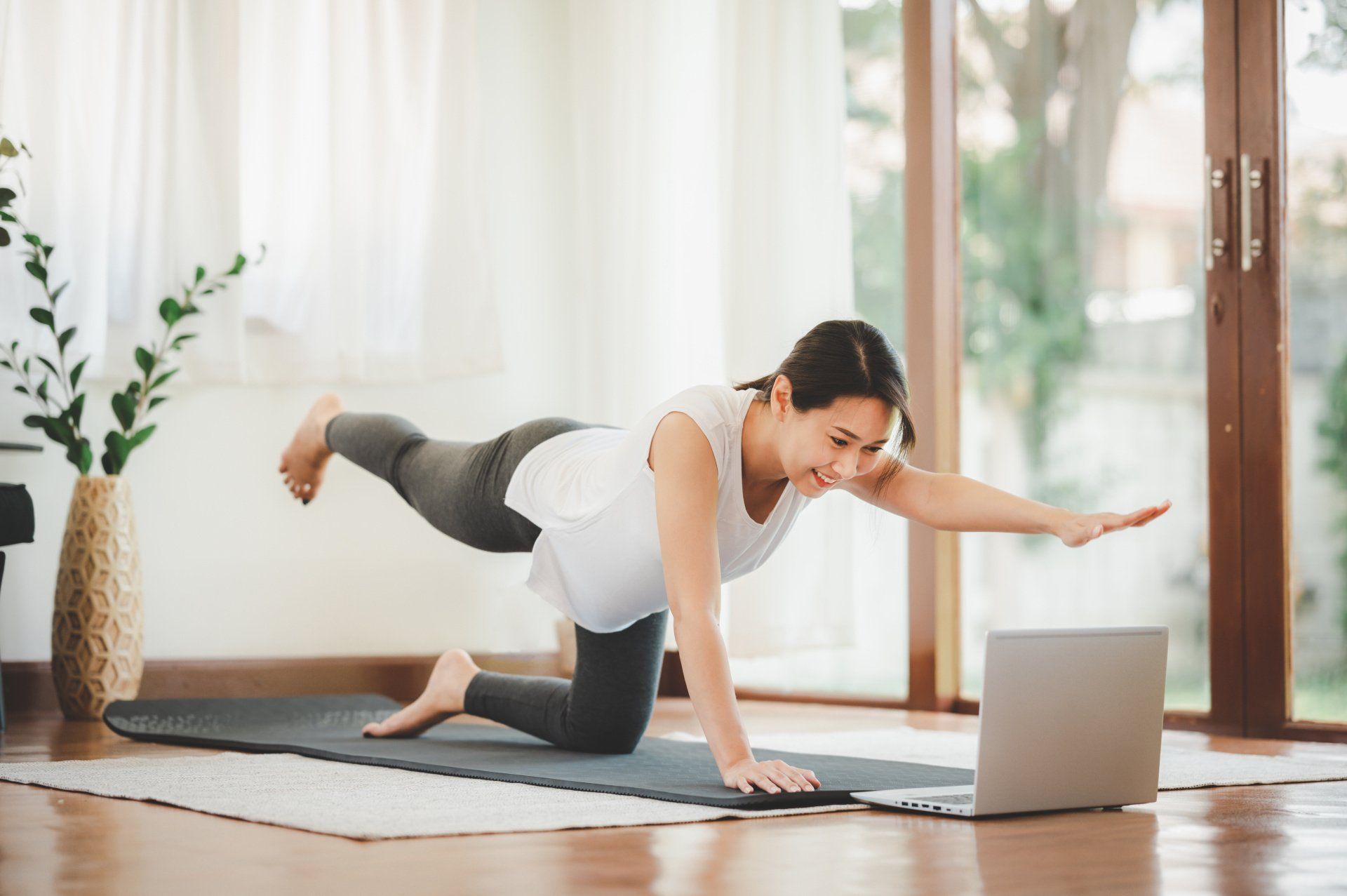THE IMPORTANCE OF EXERCISE AND PHYSICAL ACTIVITY DURING THE COVID-19 PANDEMIC

The benefits of physical activity and exercise have been demonstrated across the lifespan. We are meant to move and many of our body's systems work better when we are consistently physically active.
For managing symptoms of depression, some research suggests that elevated levels of aerobic activity may be associated with greater reductions in depressive symptoms. Consider engaging in physical activity once or twice daily that includes brief periods (30-90 seconds) of greater intensity. For some, this might be accomplished through exercise in their homes including jumping jacks, mountain climbers, and sequencing strength training exercises (i.e. standing squats, push-ups, sit-ups). For others, the use of home exercise equipment such as treadmills, elliptical machines, and stationary bikes may be helpful.
Strength-training has been shown to reduce symptoms of anxiety for individuals with and without an anxiety disorder. Weightlifting using exercise equipment or household items (textbooks, canned goods, milk jugs filled with water, paint cans) may help us to reduce the negative effects of stress and anxiety.
For children and adolescents, moderate-to-vigorous physical activity and exercise during the day are associated with elevations in self-esteem, improved concentration, reductions in depressive symptoms, and improvements in sleep.
For older adults and among individuals managing chronic medical conditions, regular walks are recommended. The benefits of strength training and weightlifting (low weight with high numbers of repetitions) may be even greater in older adults to maintain quality of life and functioning.
Moderate-to-vigorous physical activity (such as speed-walking or jogging) has been shown to help reduce the use of alcohol and other substances. Additionally, participation in regular physical activity is shown to boost the immune system. Reduction in substance use is also associated with improvement in the body's ability to fight off infection.
Many companies are offering free use of their on-line platforms that may help to identify a variety of in-home activities (indoor cycling, treadmill running, dance cardio, yoga, strength training and more) to help make exercise more enjoyable during this critical period. We strongly support the idea of ongoing vigilance regarding physical-distancing and limitations on in-person contacts as guided by the Centers for Disease Control and Prevention.
We recommend finding physical activities that you enjoy and to share your experience with others. At the same time, there is also evidence to suggest that exercise can be helpful to mood even if the act of doing the exercise is not as enjoyable.
It is important for family members to take a supportive role in the promotion of physical activity and exercise. Allowing individuals to maintain their autonomy and choice in their activities will be important for ongoing engagement.
We are all managing additional stress related to the growth of the COVID-19 pandemic and its potential to threaten the health of ourselves, our families, and our communities. Please consider using physical activity and exercise as a strategy to maintain health during this stressful period.
Although many things feel beyond our control right now, we do have the ability to be creative and to build physical activity and exercise into each of our days. We may even look back on this difficult time as the turning point when we learned new ways to build our emotional resilience and our physical health.
Source: MM Dept. of Psychiatry
